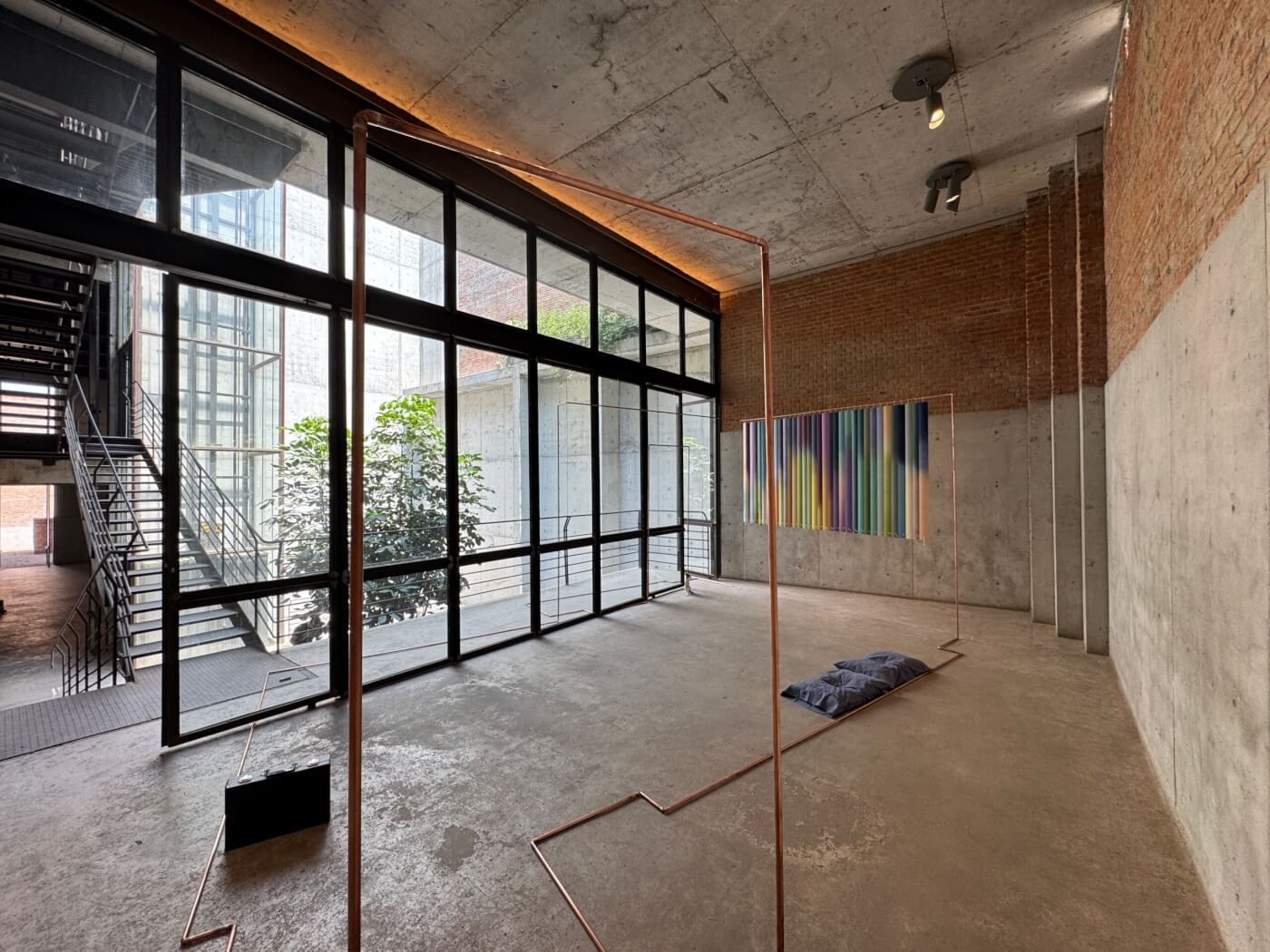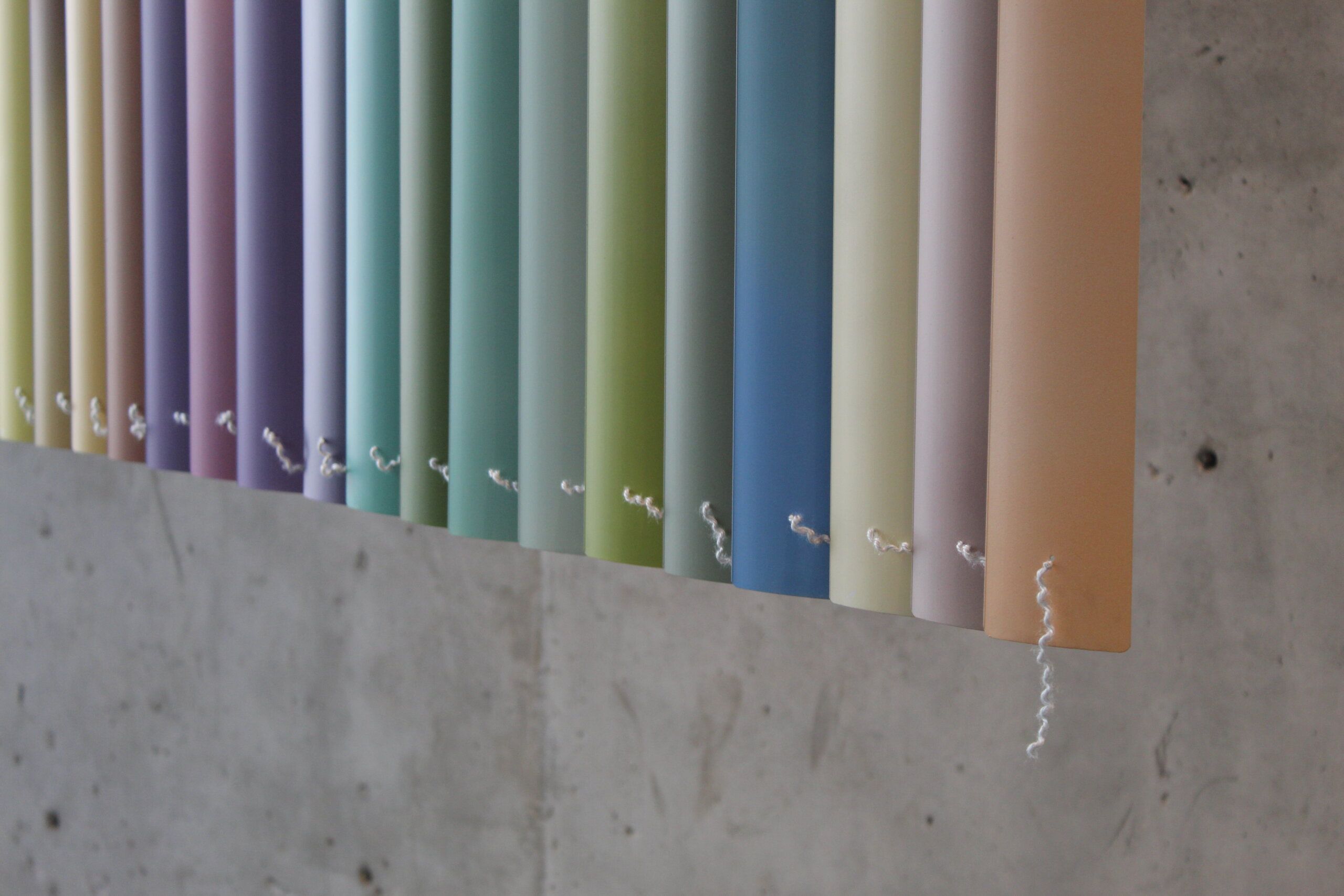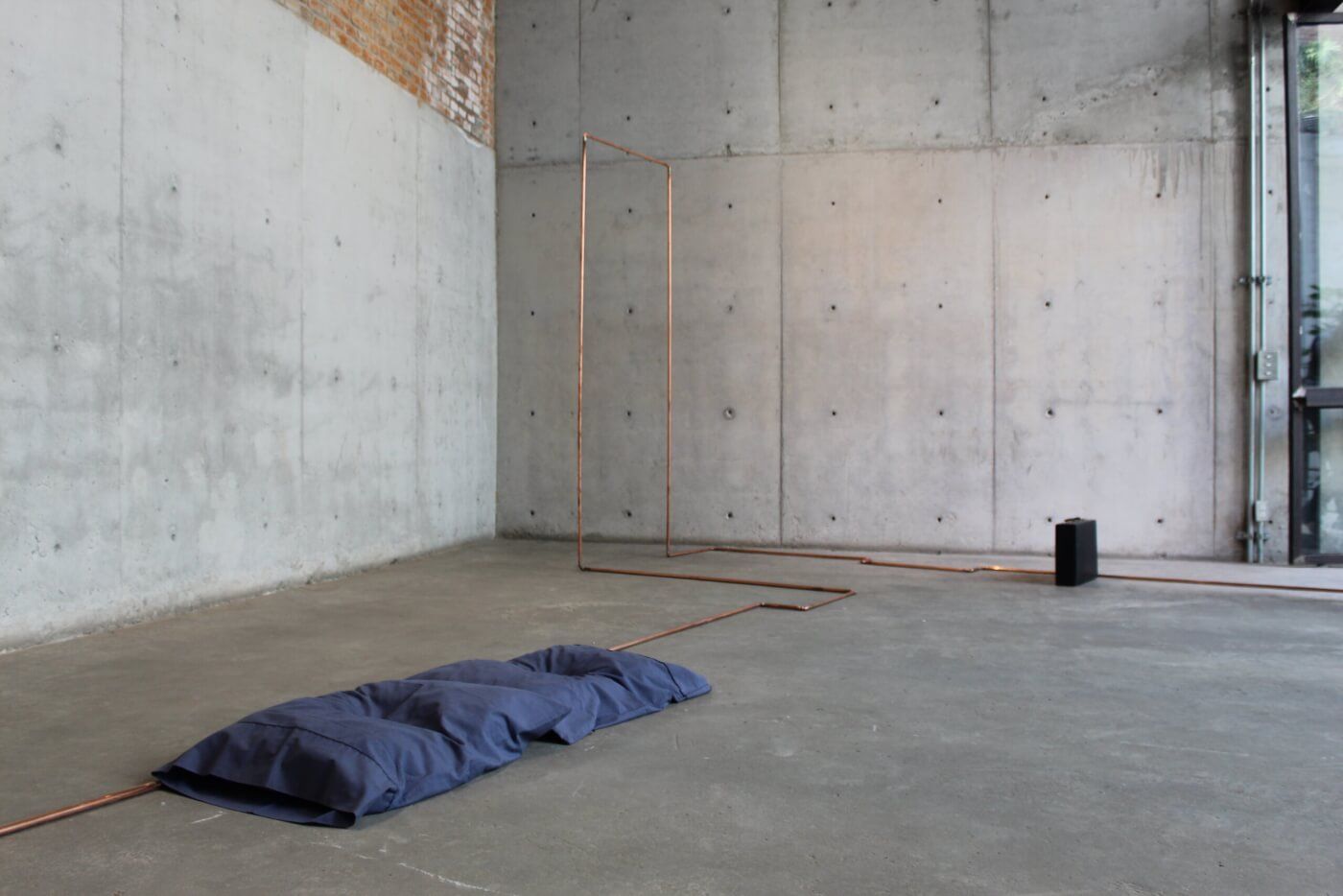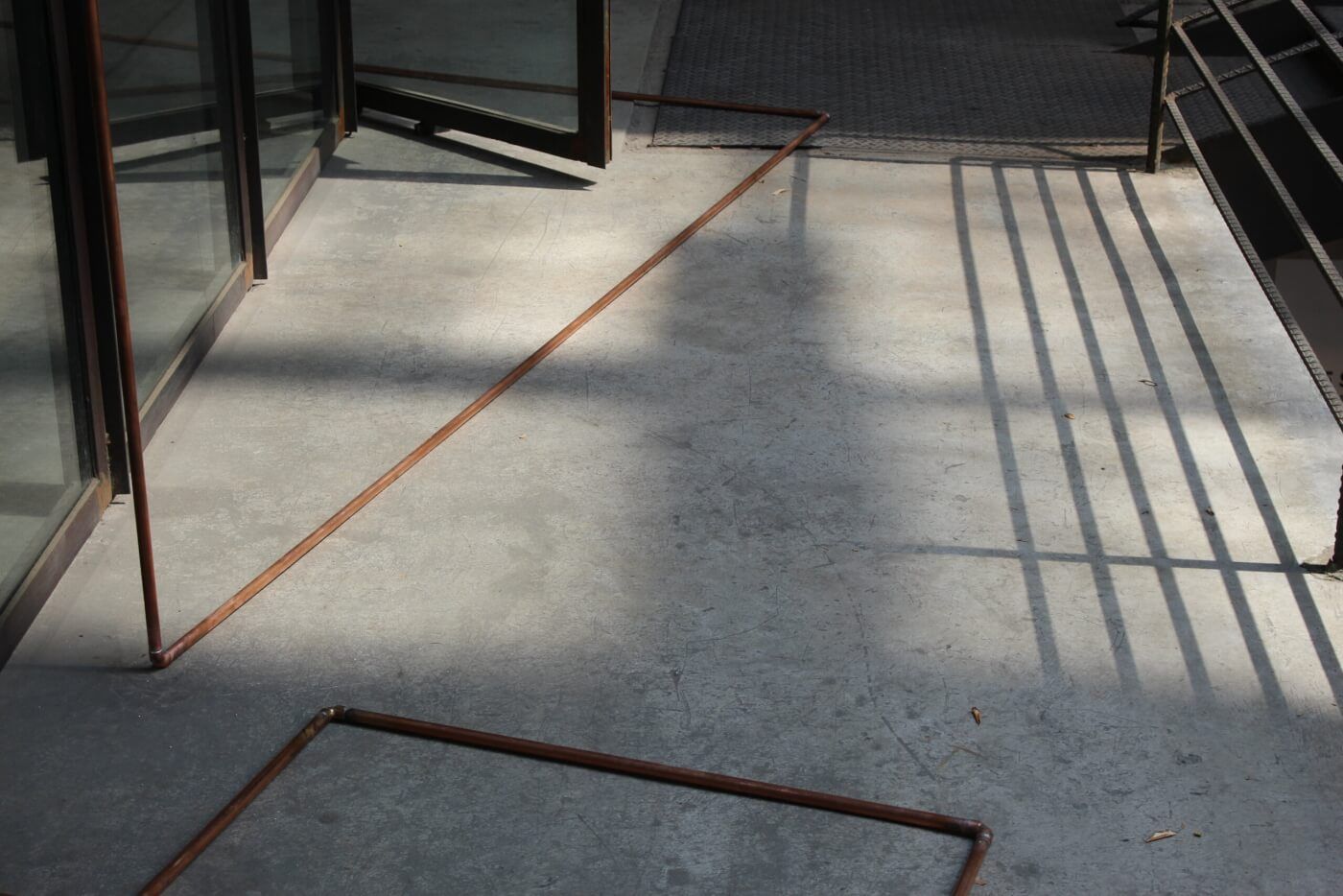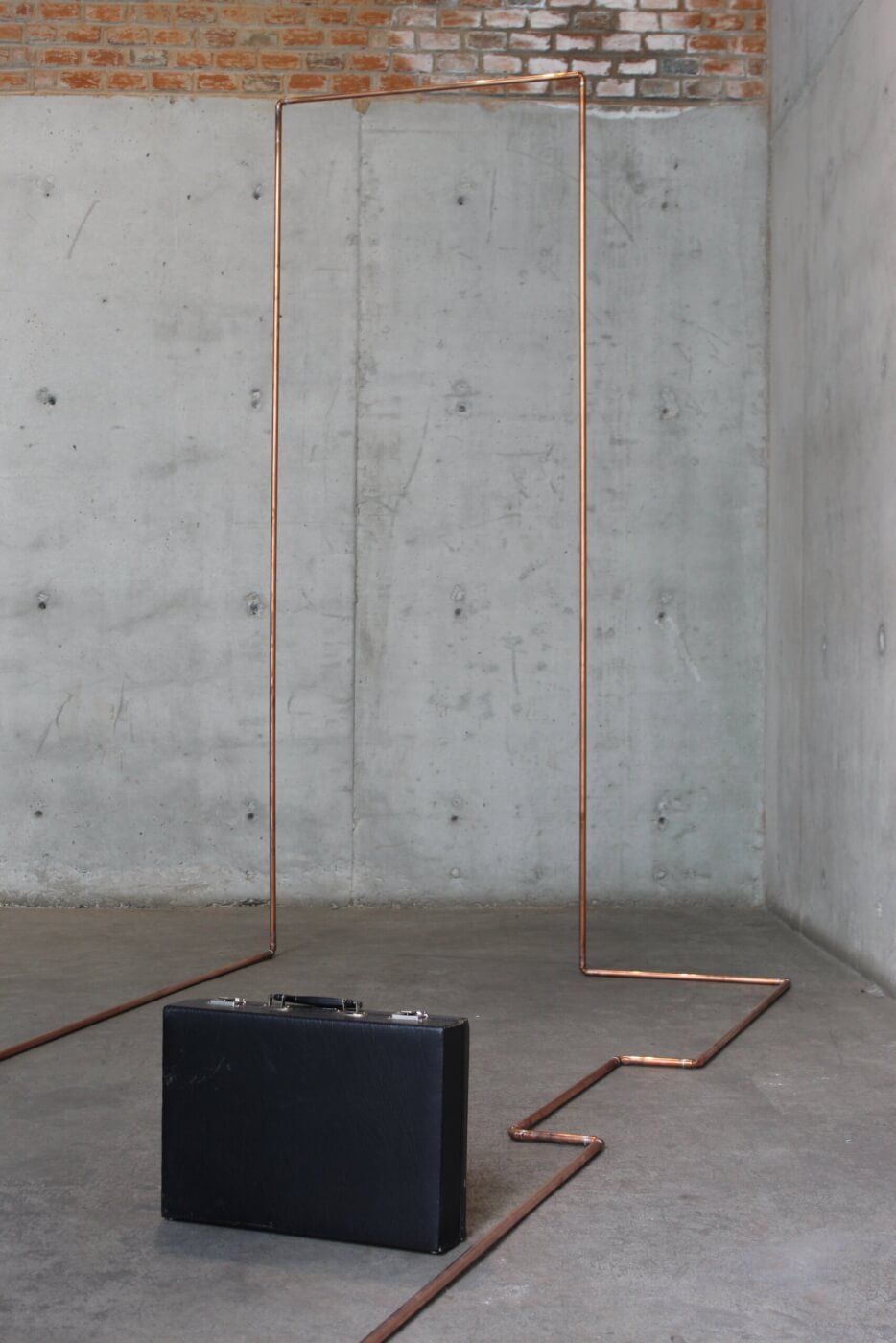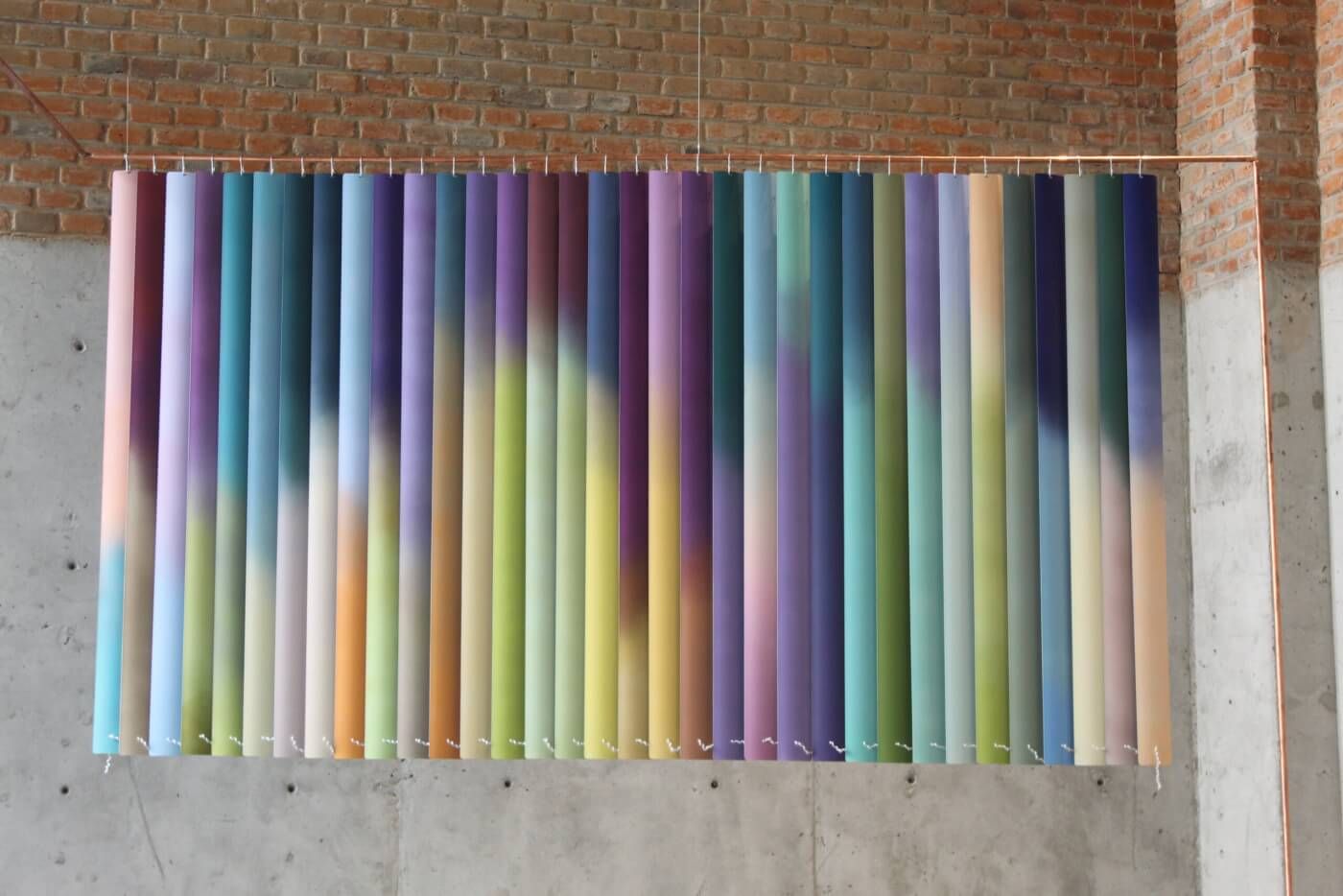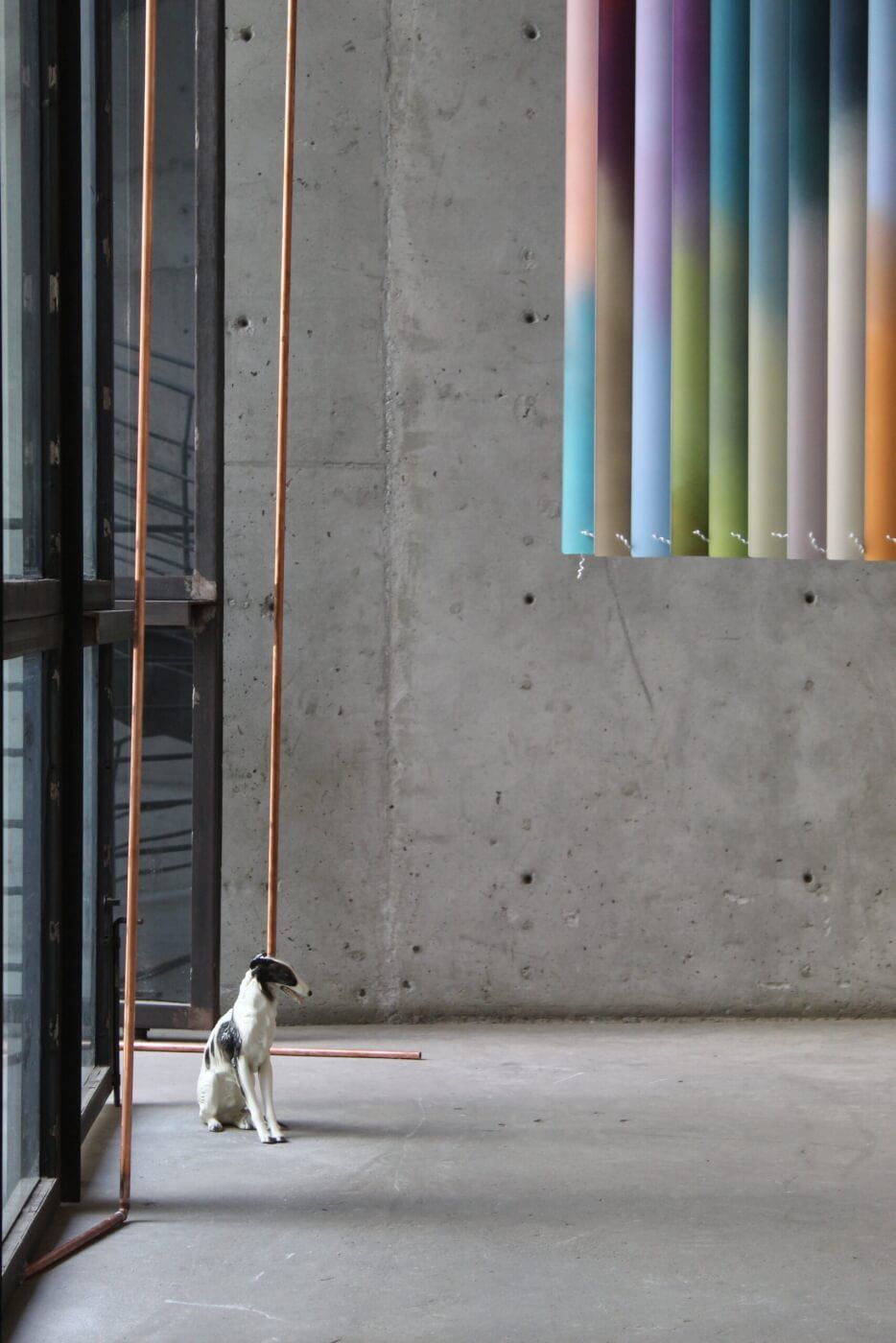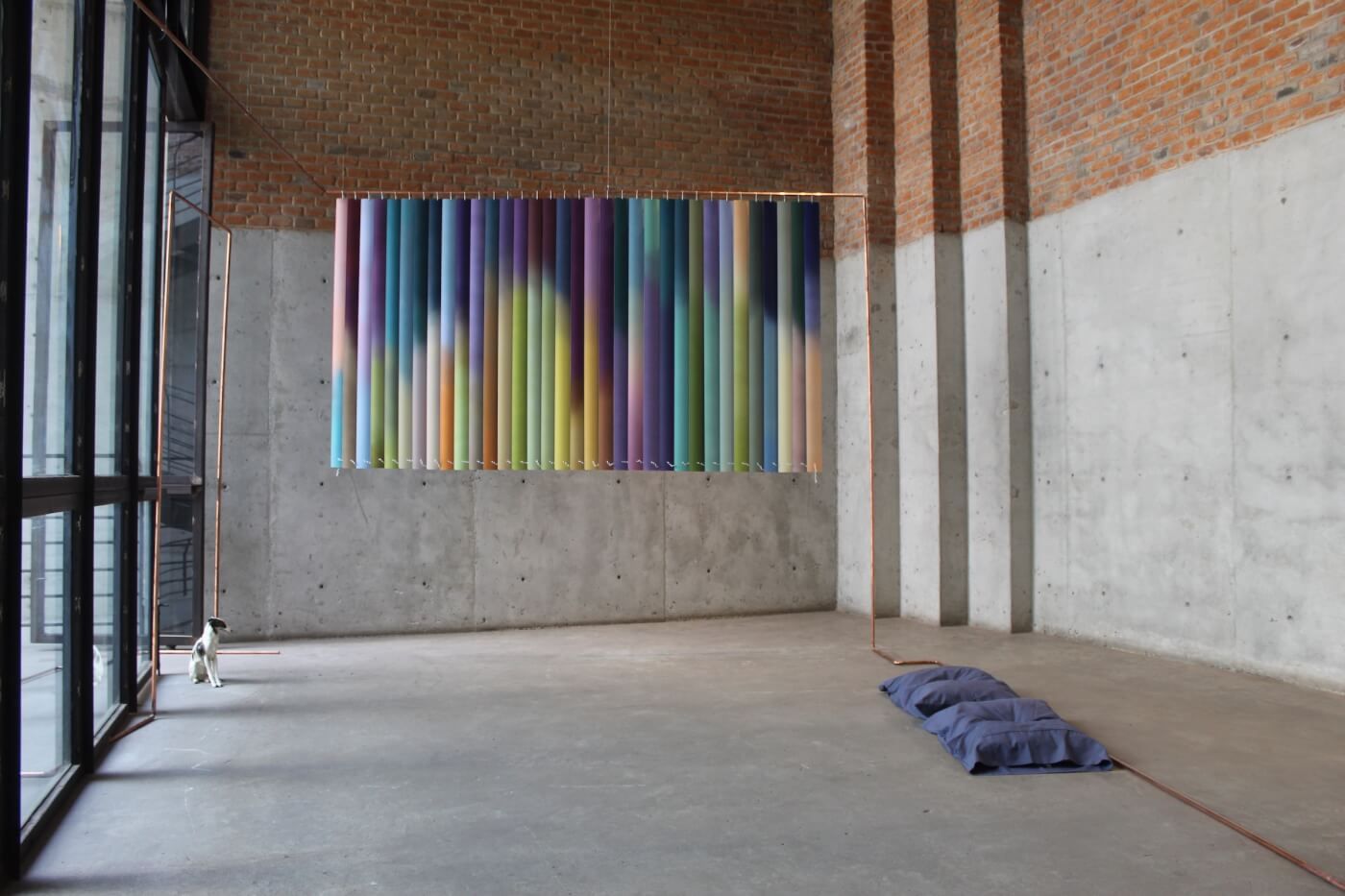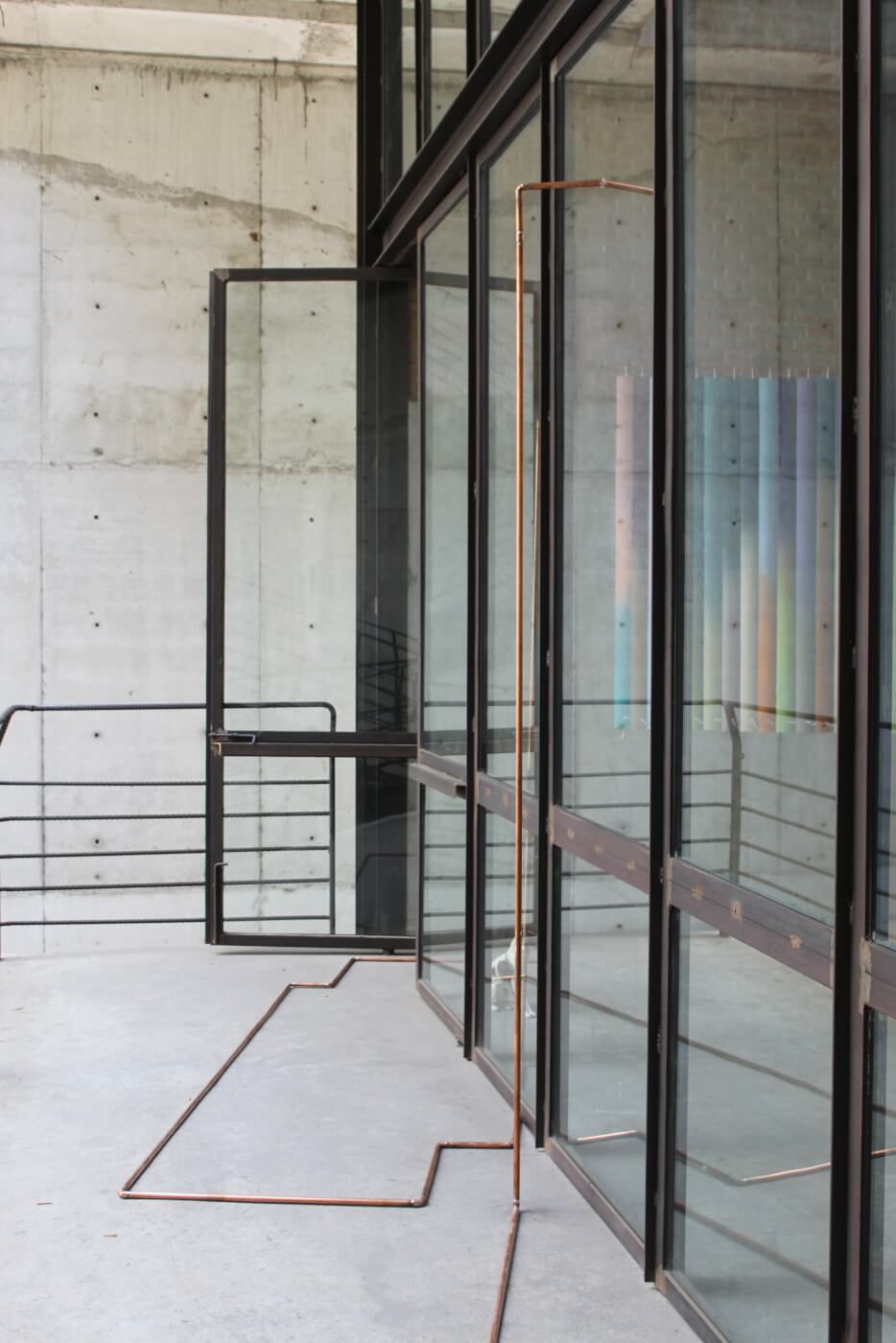Bedroom
Elisa Pinto
April 26 – July 6, 2025
Is there any place more unobtrusively significant in our lives than the room we grew up in—the space in which we played and talked, thought, read, and whispered dreams into the dark, fumbling our way through the rituals that produce personhood; in which the mental furniture that defines us assumed a coherent arrangement; and in which, awaking, we assumed the specific, self-aware consciousness that is a self?
For me it happened lying in bed, staring at the garish 1970s wallpaper (irregular, not-quite rainbow stripes) that covered one wall of my childhood bedroom. It was around age ten (?), under the sign of this inauspicious pattern, that I believe personality emplacement (psychological implantation?) occurred. There is nothing about what I felt watching airplanes on approach to San Francisco International Airport cross the big picture window in that room that I cannot recall. And I would have little difficulty reproducing the precise physical scenario of the closet’s sticky track-mounted sliding doors. Or retrieving the emotions stored in the clutter of stuff that accumulated in there—like the wind-up lion that played You Are My Sunshine, whose mustard yellow yarn mane I had been unselfconsciously sticking up my nose just a year or two earlier.
Elisa Pinto (Aguascalientes, Mexico, 1985) generally works autobiographically. This sketch presentation of her bedroom includes an enigmatic, carefully restricted selection of elements. The inclusions reference the emotional memory content of the things, people, and relationships—their presence and absence—and the overall spatial scenario of life that they constitute, in and by which she was formed. The dominant feature is the copper piping that outlines the space and suggests that what matters most is what circulates out of view. While the most visible element is a vertical blind tie-dye in which all of that emotion seems concentrated in a seething, special-effects ocean of color. The dimensions of the room are precise. As is the modeling tool Elisa used to plan the installation of Bedroom virtually. She tried every conceivable orientation to get her space to fit neatly within this space, which it does not.
We are the products of many environments, but once constructed, we are not easily contained.
– Dakin Hart
For me it happened lying in bed, staring at the garish 1970s wallpaper (irregular, not-quite rainbow stripes) that covered one wall of my childhood bedroom. It was around age ten (?), under the sign of this inauspicious pattern, that I believe personality emplacement (psychological implantation?) occurred. There is nothing about what I felt watching airplanes on approach to San Francisco International Airport cross the big picture window in that room that I cannot recall. And I would have little difficulty reproducing the precise physical scenario of the closet’s sticky track-mounted sliding doors. Or retrieving the emotions stored in the clutter of stuff that accumulated in there—like the wind-up lion that played You Are My Sunshine, whose mustard yellow yarn mane I had been unselfconsciously sticking up my nose just a year or two earlier.
Elisa Pinto (Aguascalientes, Mexico, 1985) generally works autobiographically. This sketch presentation of her bedroom includes an enigmatic, carefully restricted selection of elements. The inclusions reference the emotional memory content of the things, people, and relationships—their presence and absence—and the overall spatial scenario of life that they constitute, in and by which she was formed. The dominant feature is the copper piping that outlines the space and suggests that what matters most is what circulates out of view. While the most visible element is a vertical blind tie-dye in which all of that emotion seems concentrated in a seething, special-effects ocean of color. The dimensions of the room are precise. As is the modeling tool Elisa used to plan the installation of Bedroom virtually. She tried every conceivable orientation to get her space to fit neatly within this space, which it does not.
We are the products of many environments, but once constructed, we are not easily contained.
– Dakin Hart

